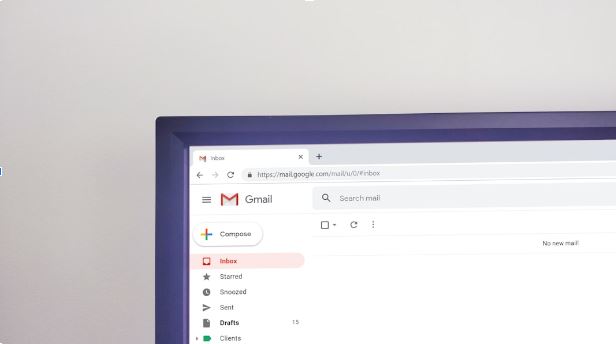You pour hours into ad copy that barely nudges your conversion rates. Most marketers miss simple shifts that make all the difference in landing page optimization. This post breaks down how to write high-converting copy, covering audience understanding, crafting...
Engage and Convert: The Role of A/B Testing in Crafting Winning Email Campaigns

Categories
You may also like…
Essential Best Practices for Mobile Website Performance
Most websites lose over half their visitors because pages don't load quickly or navigation feels clunky on phones. If your site isn't built with mobile optimization in mind, you're missing out on traffic and better rankings. This post breaks down simple steps like...
Harness the Power of Social Media Advertising for Black Friday Promotions
Black Friday marketing can make or break your holiday sales. Many small businesses miss key chances because their email campaigns and website aren't ready for the rush. This post breaks down simple marketing tips, like timing urgency-driven offers and boosting social...
In digital marketing, email marketing remains a powerful tool for engaging audiences and driving conversions. As marketers seek to refine their email campaigns and enhance their marketing strategies, A/B testing emerges as an indispensable method for optimizing performance. By systematically comparing different versions of emails, A/B testing allows marketers to identify what resonates best with their audience, leading to improved engagement rates and conversion outcomes. In this piece, we will delve into the fundamentals of A/B testing, its role in crafting successful email campaigns, and how it can be leveraged to boost your marketing efforts. Join us as we explore this crucial aspect of modern email marketing.
Understanding A/B Testing
Basics of A/B Testing
A/B testing, also known as split testing, is a method used in email marketing to compare two versions of an email to determine which performs better. The process involves sending version A to one segment of your audience and version B to another. By analyzing metrics such as open rates, click-through rates, and conversion rates, marketers can identify which version resonates more effectively with recipients. The key to successful A/B testing is to change only one element at a time, such as the subject line, call-to-action, or email layout. This allows you to pinpoint what specific factor influences audience behavior. Implementing A/B testing in email campaigns helps in making data-driven decisions that enhance marketing strategies and engagement rates. This approach ensures that your emails are tailored to meet the preferences of your audience, ultimately leading to more successful email campaigns.
Importance in Email Marketing
In email marketing, A/B testing plays a crucial role in optimizing campaigns for better performance. It allows marketers to understand what content, design, or messaging elements best capture the interest of their audience. By leveraging A/B testing, marketers can improve engagement rates by tailoring emails to meet subscriber preferences. This not only increases the likelihood of recipients opening and interacting with emails but also enhances conversion rates. Moreover, A/B testing helps in refining marketing strategies by providing actionable insights into customer behavior. It enables marketers to make informed decisions about email content, which can lead to improved brand perception and customer loyalty. In a competitive digital landscape, the ability to adapt and optimize email campaigns through A/B testing is essential for standing out and achieving marketing goals. Ultimately, it ensures that every email sent is an opportunity to connect effectively with the target audience.
Crafting Effective Email Campaigns
Key Elements of Campaigns
Designing effective email campaigns requires a focus on several key elements that can influence the success of your outreach. Firstly, the subject line is crucial as it determines whether recipients will open the email. Crafting a compelling subject line can significantly boost open rates. Next, the email’s content and structure should be clear and engaging. This includes using concise language and visual elements that resonate with the audience. The call-to-action (CTA) is another vital component, guiding recipients toward the desired action, whether it’s visiting a website or making a purchase. Personalization is also important, as tailored emails can increase relevance and engagement. Finally, the timing and frequency of emails should be considered to avoid overwhelming recipients. By carefully optimizing these elements, marketers can enhance their email campaigns, leading to higher engagement rates and conversion outcomes, while effectively reaching their marketing objectives.

Personalization and Relevance
Personalization and relevance are essential components in crafting effective email campaigns. By tailoring content to individual preferences and behaviors, marketers can create a more engaging experience for their audience. Personalized emails, which may include the recipient’s name or references to past interactions, can significantly enhance open and click-through rates. Moreover, relevance ensures that the content delivered aligns with the interests and needs of the audience. This can be achieved by segmenting email lists based on demographics, purchase history, or engagement levels. Employing data-driven insights allows marketers to deliver messages that resonate more deeply with their audience. Personalization not only boosts engagement rates but also fosters a sense of connection and loyalty between the brand and its customers. Ultimately, by focusing on personalization and relevance, marketers can ensure their email campaigns are not just opened, but also acted upon, leading to improved conversion rates and customer satisfaction.

Implementing A/B Testing in Email
Setting Up Your Test
Setting up an A/B test in email marketing involves several crucial steps to ensure reliable and actionable results. Begin by identifying the specific element you wish to test, such as the subject line, email design, or call-to-action. It’s vital to change only one variable at a time to clearly understand its impact on performance. Next, define your goals for the test, whether it’s to increase open rates, click-through rates, or conversions. Segment your audience into two groups that are statistically similar to avoid skewing results. Ensure the sample size is large enough to yield significant data. Decide on the duration of the test, keeping it long enough to gather sufficient responses but not so long that external factors could affect the outcome. After the test concludes, analyze the results to determine which version performed better. Using these insights, refine your email marketing strategies to enhance future campaigns.

Analyzing Test Results
Analyzing the results of an A/B test is a critical step in leveraging insights for improved email marketing strategies. Begin by comparing key metrics such as open rates, click-through rates, and conversion rates between the two versions. Look for statistically significant differences to determine which variation was more effective. It’s important to consider the sample size and confidence interval to ensure the reliability of the results. Additionally, qualitative feedback from recipients, if available, can provide further insight into why a particular version performed better. Identify trends or patterns that could inform future campaigns. For example, if one subject line resulted in higher open rates, consider adopting a similar approach in upcoming emails. Use the conclusions drawn from the analysis to refine your email elements, optimize engagement rates, and drive better conversion outcomes. Ultimately, the insights gained from A/B testing should guide and improve your overall email marketing efforts.
Boosting Engagement Rates
Optimizing Subject Lines
Optimizing subject lines is key to boosting engagement rates in email marketing. The subject line is often the first impression a recipient has of your email, and it significantly influences the open rate. To create effective subject lines, keep them concise and compelling. Aim to capture the reader’s attention while clearly conveying the email’s value. Personalization can enhance engagement; including the recipient’s name or referencing their specific interests can make the message feel more relevant. Additionally, consider experimenting with emojis or power words to create a sense of urgency or curiosity. A/B testing different subject line variations can reveal what resonates best with your audience. Analyze performance metrics to understand which styles or phrases drive higher engagement. By continuously refining subject lines based on data insights, you can improve the likelihood of recipients opening and engaging with your emails, ultimately leading to more successful email marketing campaigns.
Testing Content and Design
Testing content and design in email campaigns is essential for boosting engagement rates. The content should be relevant, concise, and provide value to the reader. Experimenting with different content formats—like text, images, or videos—can help determine what appeals most to your audience. Similarly, the design of the email, including layout, color schemes, and font choices, plays a significant role in capturing attention. A/B testing allows you to compare variations in content and design to see which combinations yield the best results. For instance, testing different placements of call-to-action buttons or varying the length of content can provide insights into user preferences. By analyzing engagement metrics such as click-through rates and conversions, you can refine your approach. This iterative process enables marketers to craft emails that are not only visually appealing but also effective in driving desired actions, ultimately enhancing the overall performance of email marketing campaigns.

Maximizing Conversion Rates
Call-to-Action Strategies
Effective call-to-action (CTA) strategies are crucial for maximizing conversion rates in email marketing. A well-crafted CTA guides recipients toward taking the desired action, such as making a purchase, signing up for a newsletter, or downloading a resource. To create an impactful CTA, use clear and compelling language that prompts immediate action. Phrases like “Shop Now,” “Get Started,” or “Learn More” can be effective. The placement of the CTA within the email also matters; it should be prominently displayed and easily accessible. Additionally, consider the design elements surrounding the CTA, including contrasting colors and whitespace, to make it stand out. A/B testing different CTA variations can provide insights into what drives more conversions. It’s important to align the CTA with the overall message of the email to ensure consistency and relevance. By optimizing CTA strategies, marketers can enhance the effectiveness of their email campaigns and achieve higher conversion outcomes.
Timing and Frequency Testing
Timing and frequency are critical factors in maximizing conversion rates through email marketing. The timing of when an email is sent can significantly impact its open and conversion rates. Testing different send times, such as mornings versus evenings, or weekdays versus weekends, can provide insights into when your audience is most responsive. Similarly, the frequency of emails is crucial; too many emails can overwhelm recipients, leading to unsubscribes, while too few may result in missed opportunities. A/B testing various frequencies helps identify the optimal balance that maintains audience engagement without causing fatigue. Analyze performance metrics to assess which timing and frequency combinations lead to higher conversions. It’s essential to tailor these strategies to your specific audience, as preferences can vary widely depending on factors like industry and demographics. By fine-tuning the timing and frequency of your email campaigns, you can enhance engagement and drive better conversion outcomes, ultimately improving the effectiveness of your marketing efforts.



